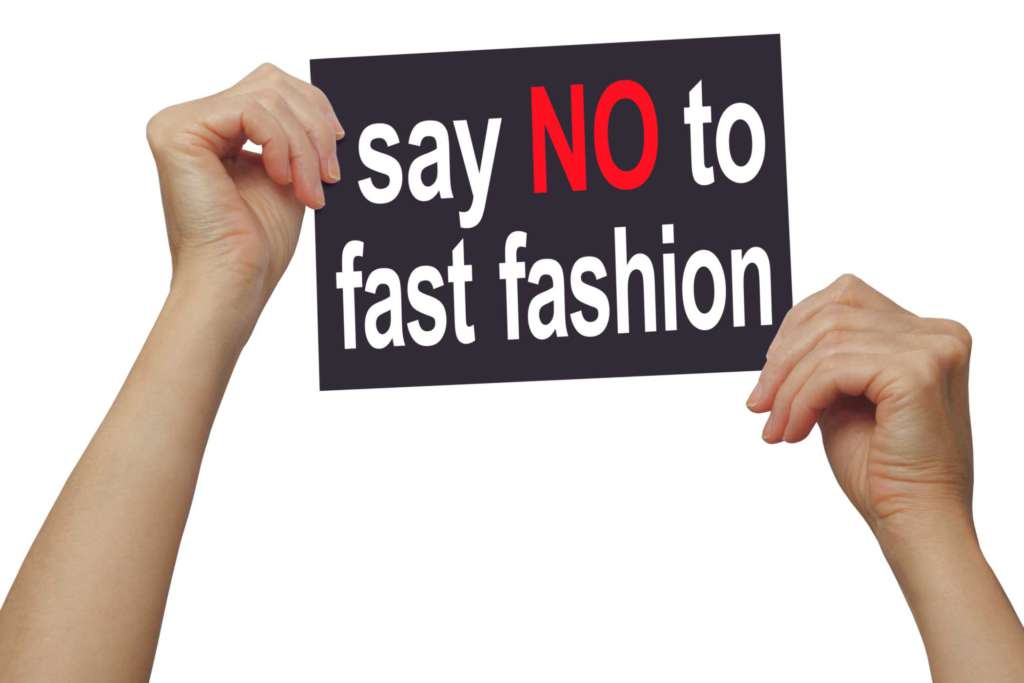What Is Fast Fashion Waste? How Can Your Brand Reduce Waste Generation?



Fast fashion has been creating quite a buzz in the fashion world over the past years. Fast fashion is a contemporary term used by most fashion retailers and designers for designs that flow from the catwalk quickly to capture current fashion trends. The word 'fast' represents quick-to-make, cheap, and trendy clothing. These fast fashion clothing are therefore rapidly becoming the first choice of fashion retailers worldwide. But why is fast fashion apparel so cost-friendly? These types of clothing consist of unsustainable material, and the people who sewed it face exploitation.
Fast fashion clothing, in a way, is exploiting both the people and the planet.
What Is Fast Fashion Waste?
Fast Fashion Waste, as the term suggests, is the waste generated by fast fashion disposable products. This type of waste harms mainly two sectors: environmental rights and human rights. Here is a detailed analysis of the harmful effect of fast fashion waste:
The environmental impact of fast fashion waste

The cheap production of fast fashion apparel makes it a hazard for the environment. This industry harms the environment in many ways:
-Textiles
Famous textiles of the clothing industry play a vital role in apparel making. Many of the widely used apparels are not so eco-friendly. Here are some examples. Polyester is one of the most popular clothing materials used by fashion retailers. But polyester is a form of plastic. When a person washes polyester garments, small pieces of microplastic get discharged into the waterways. Microplastic particles are so small that they cannot be filtered out. Secondly, cotton is one of the most used raw materials in the fast fashion industry. It is also one of the most pesticide-heavy crops in the world.
-Dyes
Cheap fabrics use a lot of synthetic dyes like reactive, acid, and azo dyes. Also, it takes around 200 tonnes of water to produce one tonne of fabric. The water returned to the environment in this process is highly toxic. This wastewater is unregulated by big fashion brands, and it causes a lot of harm to the environment.
-Landfills and Waste
According to a report, textile waste occupies nearly 5% of all landfill space. This fast-fashion waste is hard to decompose and is just increasing the beauty of the landfills around the globe.
Human Rights
All those who think that machines stitch the garments are wrong. Humans who are not paid a fair living wage for their work stitch these apparel we wear. In some cases, these humans are children. Child labor is present at many levels of the fashion industry. These children are exposed to toxic chemicals and the environment to make fabrics. Also, poor people do not receive fair wages, and the big brands exploit them.
How Can Your Brand Reduce Waste Generation?

When a person has control over any apparel production, they should resort to reducing waste generation. There are multiple ways to reduce the waste generated by a brand. Here are some ways.
1. Recycle and reuse the old clothes
New cloth production takes a lot of time, effort, and in return, gives back the toxic chemicals. To promote sustainability, one must try to recycle the left-out apparel or the old clothes people donate. This eco-friendly way can minimize the waste generated from your brand to some extent. Nowadays, there are a ton of fashion brands that are recycling old clothes to make new ones. Synergy and Organic Basics are some of them. This way, a brand will grab the attention of the customers for this eco-friendly initiative.
2. Conserve water for the coming future
Many eco-conscious companies are treating water through a biological process called MBBR, also known as Moving Bed Bioreactor. With the help of this method, the dye removal process takes less time and effort than other processes like coagulation or absorption. This technology saves up energy consumption and works efficiently.
This way, a brand can save tonnes of water regularly. It can also help in attracting maximum customer attention. Clothing brands can include the message relying on the company's eco-friendly goal, claiming that the water used is treated to be safe upon leaving the factory.
3. Avoid Overproduction of apparel
Sometimes to be on the safe side, most of the clothing labels overproduce the fabrics. As a result, much of the material is left out unused. Not to forget the increased environmental pollution and efforts of the workers in making that fabric. A cycle like this should stop. In the era of technology, there are a lot of tools to help brand owners in this crisis. One of these tools is smart trend prediction or fashion cutting tools. These tools can help in preventing the overproduction of clothing. In the end, the brand can save money, time, effort, and the environment.
4. Quality over quantity
Producing cheap clothes is not the way to be a winner in the competitive market. People do buy expensive clothes but for a reason: quality. Yes, resorting to a good quality fabric to make apparel can boost your sales. Good quality fabrics are also made from less harmful chemicals and dyes. It is even better if you resort to using sustainable fabrics for your clothing items. Even if the price is raised, these items are very much in demand. Good quality material, when washed, do not shed harmful chemicals easily. They are good for the environment plus the people wearing them.
Also, the brand can boast their sustainable fabrics usage for making apparel.
5. Improve the Packaging
Avoid using plastic packaging or plastic frills with the packaging of your product. Try to use eco-friendly packaging to lessen wastage and promote sustainability. A message for the environment can also be written on the packaging to convey a positive message to your customers. This can help to save the environment on a large scale. Sometimes these small changes are more than enough to create big changes in the world.
6. Resort to sustainable transport
With the large production of apparel, transport of this apparel is a very vital factor. The transport of these items, if done sustainably, can save a lot of fuel and not forget the environment. Many brands use electric vehicles for transport which is an amazing way to save the planet by contributing anything a person can.
Conclusion
Fast fashion waste is a serious problem of which there is not much awareness. Being from the fashion industry, a clothing label should also feel responsible for it. As a positive measure, many of the clothing labels prefer more ecological ways from production to delivery of their apparel. As a result, more and more brands are coming forward to adopt these eco-friendly ways. These small initiatives are impacting the globe on large levels.
Fashion merchandisers, designers, or retailers are always in the hunt for premium quality fabrics for their next fashion venture. But getting these fabrics is not an easy task. Worry no more as a perfect destination is waiting for you. To get high-quality and super affordable fabrics at super exciting discount prices, head to Fashinza!



















